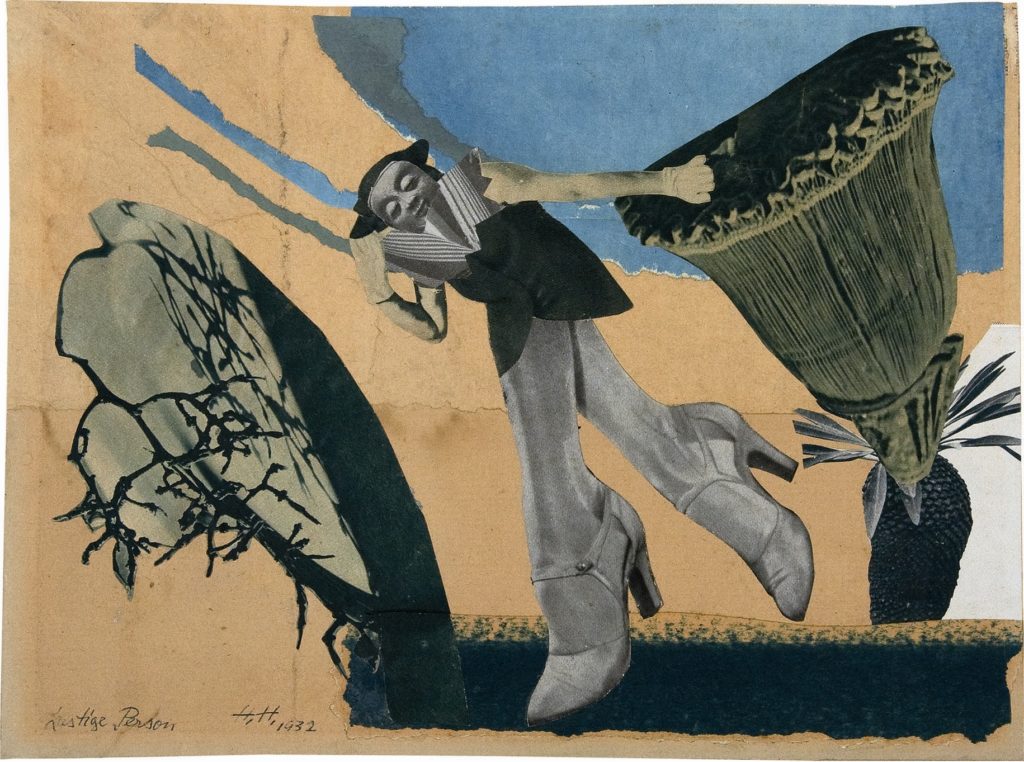Lustige Person

The German artist Hannah Höch (1889-1978) is one of the very few female artists that belonged to the international Dada movement. Dada, or Dadaism, is the term given the anarchistic, counter-culture movement that had a strong influence on visual art, literature and theatre, which arose during the First World War and reached its apex around 1920. Briefly, one can characterise this radical project as a strong revolt against the bourgeois, seemingly logical and rational society, that had led to the atrocities of the world war. The artists who adhered to the movement rejected the leading aesthetic and art that was part of this corrupt society, and did not wish to create art but anti art. The Dada movement had its main base in Zurich, with Tristan Tzara, Hugo Ball, Hans Arp and Marcell Janco among its most famous participants. Kurt Schwitters can also be associated with this milieu. With an emphasis on provocation, absurdity and chance, Dada presaged Surrealism and later forms of performance art and action art.
Hannah Höch came in contact with Dada in 1915, when she met Raoul Hausmann, who was an active member of the Berlin fraction of the movement. Höch and Hausmann are together credited as being the first to work with the photomontage technique, a form of collage where pieces of photographs are among the materials used. Hannah Höch was very experimental in her approach and worked in a number of different mediums and techniques, but it is above all with her collages that she made a name for herself. Her works often have a clear message, and many can be considered as bitter criticism of popular culture’s obsession with beauty, which had gained increasing dominance during this period. Nevertheless, the content does not overshadow the formal qualities of her pictures. With the help of everyday materials – for example clippings from newspapers and magazines, postcards, wrapping paper, buttons, bits of fabric and photographs – she demonstrates a distinctive sense of form and colour. In her modest formats she makes use of a collage technique that is both poetic and pioneering in its form of expression.
OWG